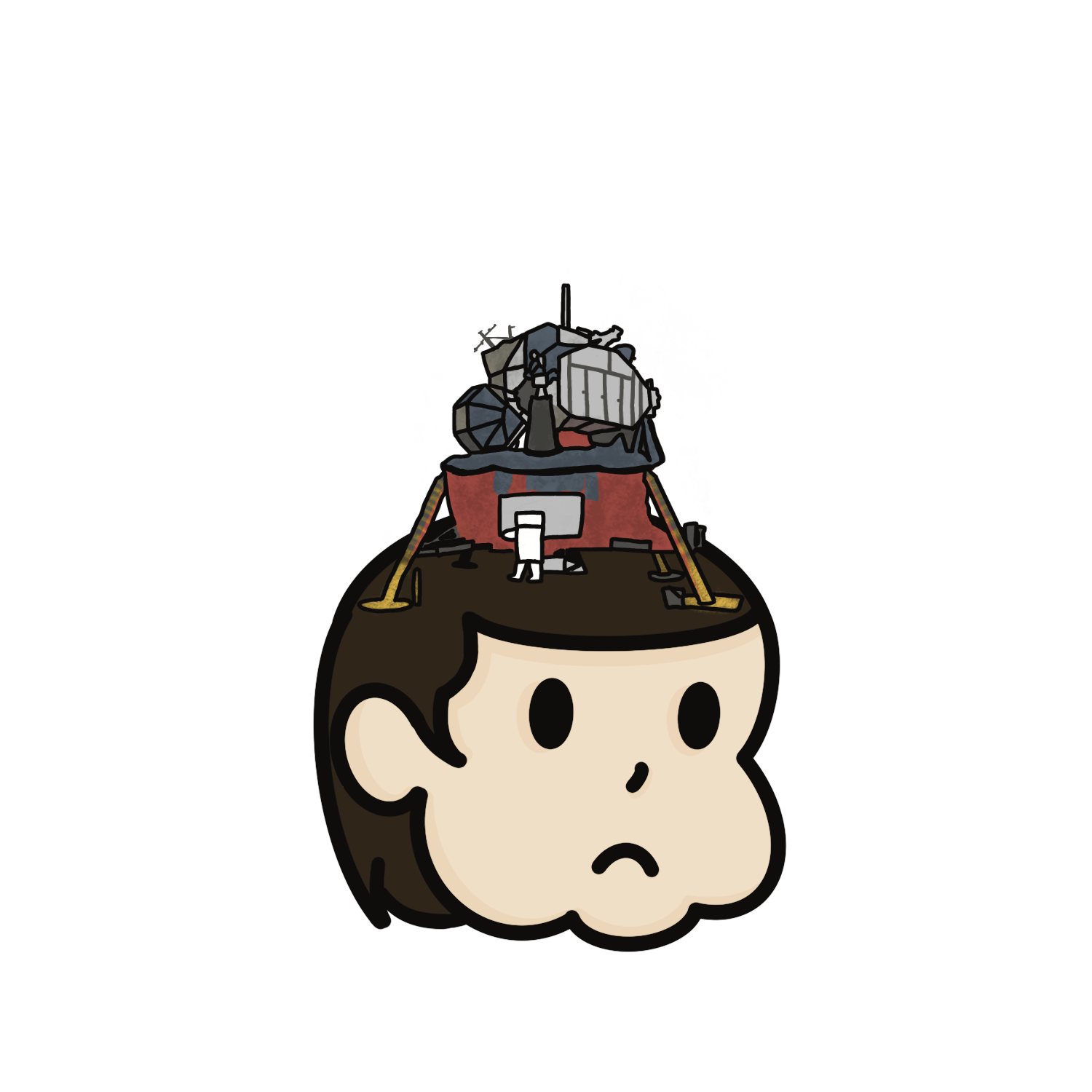Right Answers Only: The moon isn’t real

Seen here on my head is the Eagle lander prop from Kubrick’s hit psyop “Man Lands on the Moon.” Graphic by Edleen Guiao.
On Sept. 12, 1962, John F. Kennedy would inform a crowd gathered at Rice University that the United States of America would put a man on the moon before the end of the decade. On July 20, 1969, Neil Armstrong became the first man to set foot on the moon. Or did he?
All my life, I’ve had this sinking feeling that when I look into the night sky at our planet’s satellite that it isn’t real. Big government wants you to believe that in 1969 Americans landed on the moon, and following missions sent more men to the surface. But it’s all part of one big lie that the United States has been perpetuating for years — the moon isn’t real, and we never landed on it.
For starters, trust of the American government was at an all-time high in 1964, according to the Pew Research Center, where 77% of Americans trusted the government. However, after NASA’s incident with the Apollo 1 mission, where three astronauts gracefully sacrificed their lives during a routine exercise, trust in the government began to plummet. All of the engineers and rocket scientists were worried for their job security. After all, if they couldn’t get three men off the ground without incident, how would they ever get to the moon? The answer lies with one man, and his name is Stanley Kubrick.
Before the Apollo 1 incident, Kubrick was hot off the heels of the release of “Dr. Strangelove.” Then, in 1968, he released “2001: A Space Odyssey” to critical acclaim. People were impressed by how real he was able to make space look, and that gave NASA an idea. If Kubrick could make space look real, he could definitely make a faked moon landing look real.
So NASA set up the greatest hoax of the 20th century and released it to the world — and it worked. For a brief moment, people weren’t focused on the government’s ineptitude in Vietnam, and instead were filled with awe at the moon landing.
Not only was this ruse meant to deceive the public, it was also trying to discredit Aristotle, the philosopher to whom the celestial sphere model for outer space is most commonly attributed. Aristotle’s idea is that objects are painted onto transparent spheres that orbit the Earth at a fixed distance, such as the planets, our moon and the stars. So if man had truly gone to the moon, then that would imply that the moon was not painted onto our night sky, but that it was a real, tangible object.
If the moon isn’t painted, why does it always look the same month after month, and why does it always occupy the same places in the night sky?
So-called “scientists” like to claim that Earth’s gravity has the moon in a tidally locked orbit, and that certain parts of the moon will be lit up by the sun depending on where the moon is in its orbit. But if the sun lit up the moon then there wouldn’t be a “dark side”, and I can’t see gravity, so it can’t possibly be real.
What I can see is an object that is clearly painted in the sky like everything else that’s supposedly out there in the galaxy.
Moon-truthers when confronted with this reality often point to the alleged moon rocks and other physical evidence brought back by astronauts. To that, I pose a question: Has NASA ever allowed the general public to eat a moon rock? The answer is no, and it’s all because of Nick Park.
Nick Park was a man from England who was getting into the filmmaking industry in the 1980s, and anyone wanting to make it big in the film industry would undoubtedly study Stanley Kubrick’s filmography. Upon studying it, he noticed some similarities in other Kubrick movies and the moon landing. Park also noticed the cheese-like surface of the moon that appeared in Kubrick’s moon landing film, and as such made the surface of the moon literal cheese in his film “A Grand Day Out.”
It is suspected that the paint the moon is made of is, in fact, cheese paint as normal paint does not have the texture that the surface of the moon does.
While this will never be confirmed — as humans will never reach the moon — it is the closest approximation of what the moon might be made of that humanity has. As such, any alleged “moon rock” that NASA fans point to as evidence of landings, aren’t real — since they aren’t cheese.
At the end of the day, humanity will never reach the moon, because there is no moon to be reached in the first place, and that is a tragedy. NASA is reportedly preparing to “send another manned mission to the moon” via the Artemis program, and they’re likely looking for someone to direct this sequel. My money is on Christopher Nolan after the immense success of “Interstellar.”


